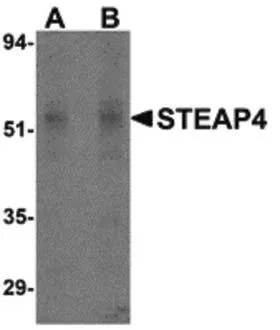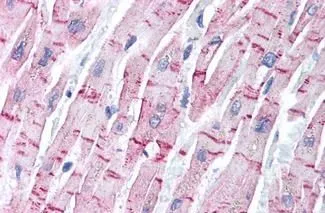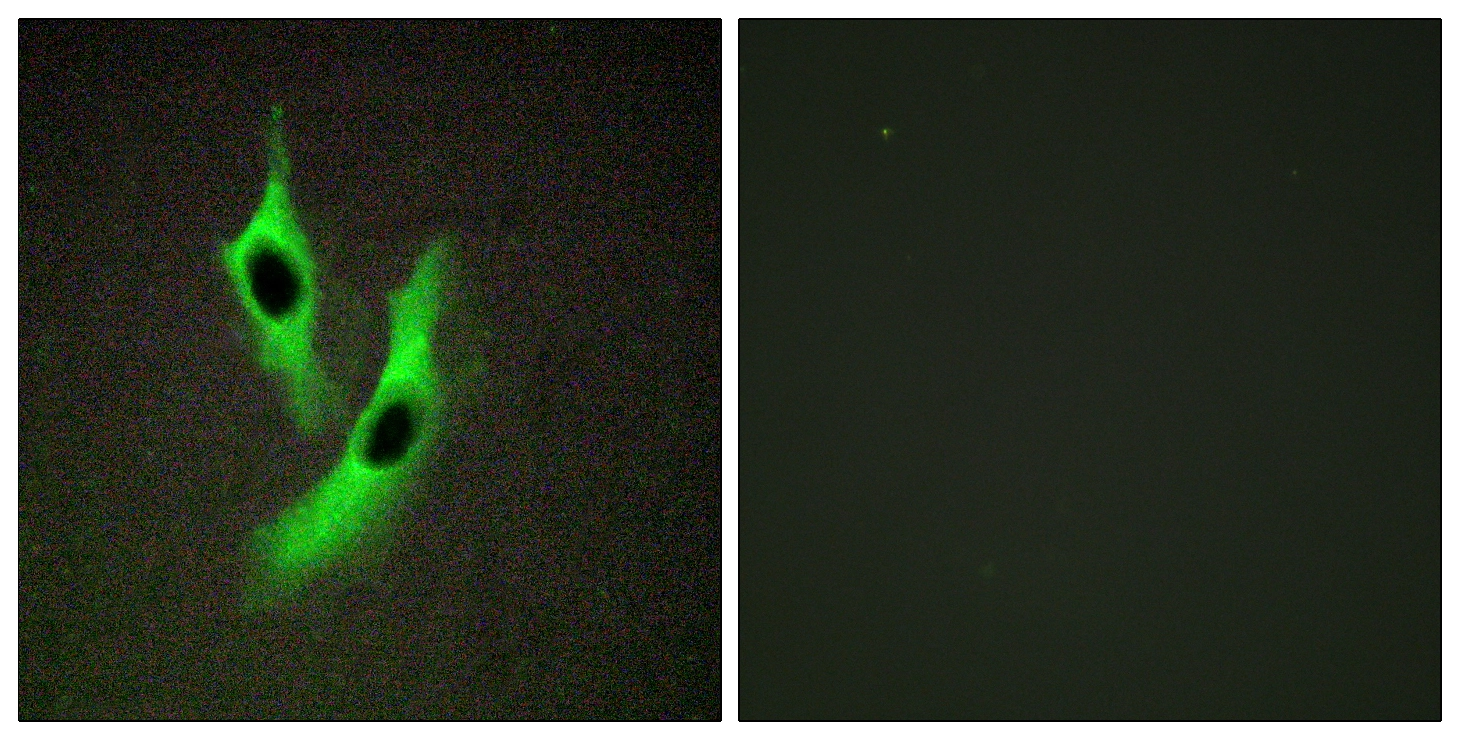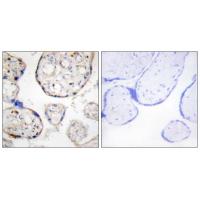
WB analysis of rat liver tissue lysate using GTX85695 STEAP4 antibody. Dilution : 0.5 microg/mL (Lane A) and 1 microg/mL (Lane B)
STEAP4 antibody
GTX85695
ApplicationsWestern Blot, ELISA, ImmunoHistoChemistry, ImmunoHistoChemistry Paraffin
Product group Antibodies
TargetSTEAP4
Overview
- SupplierGeneTex
- Product NameSTEAP4 antibody
- Delivery Days Customer9
- Application Supplier NoteWB: 2 microg/ml. IHC-P: 5 microg/ml. *Optimal dilutions/concentrations should be determined by the researcher.Not tested in other applications.
- ApplicationsWestern Blot, ELISA, ImmunoHistoChemistry, ImmunoHistoChemistry Paraffin
- CertificationResearch Use Only
- ClonalityPolyclonal
- Concentration1 mg/ml
- ConjugateUnconjugated
- Gene ID79689
- Target nameSTEAP4
- Target descriptionSTEAP4 metalloreductase
- Target synonymsSTAMP2, SchLAH, TIARP, TNFAIP9, metalloreductase STEAP4, STEAP family member 4, seven chromosome locus associated with HCC, six transmembrane prostate protein 2, six-transmembrane epithelial antigen of prostate 4, sixTransMembrane protein of prostate 2, tumor necrosis factor, alpha-induced protein 9, tumor necrosis-alpha-induced adipose-related protein
- HostRabbit
- IsotypeIgG
- Protein IDQ687X5
- Protein NameMetalloreductase STEAP4
- Scientific DescriptionThe protein encoded by this gene belongs to the STEAP (six transmembrane epithelial antigen of prostate) family, and resides in the golgi apparatus. It functions as a metalloreductase that has the ability to reduce both Fe(3+) to Fe(2+) and Cu(2+) to Cu(1+), using NAD(+) as acceptor. Studies in mice and human suggest that this gene maybe involved in adipocyte development and metabolism, and may contribute to the normal biology of the prostate cell, as well as prostate cancer progression. Alternatively spliced transcript variants encoding different isoforms have been found for this gene. [provided by RefSeq, Apr 2011]
- Storage Instruction-20°C or -80°C,2°C to 8°C
- UNSPSC12352203








